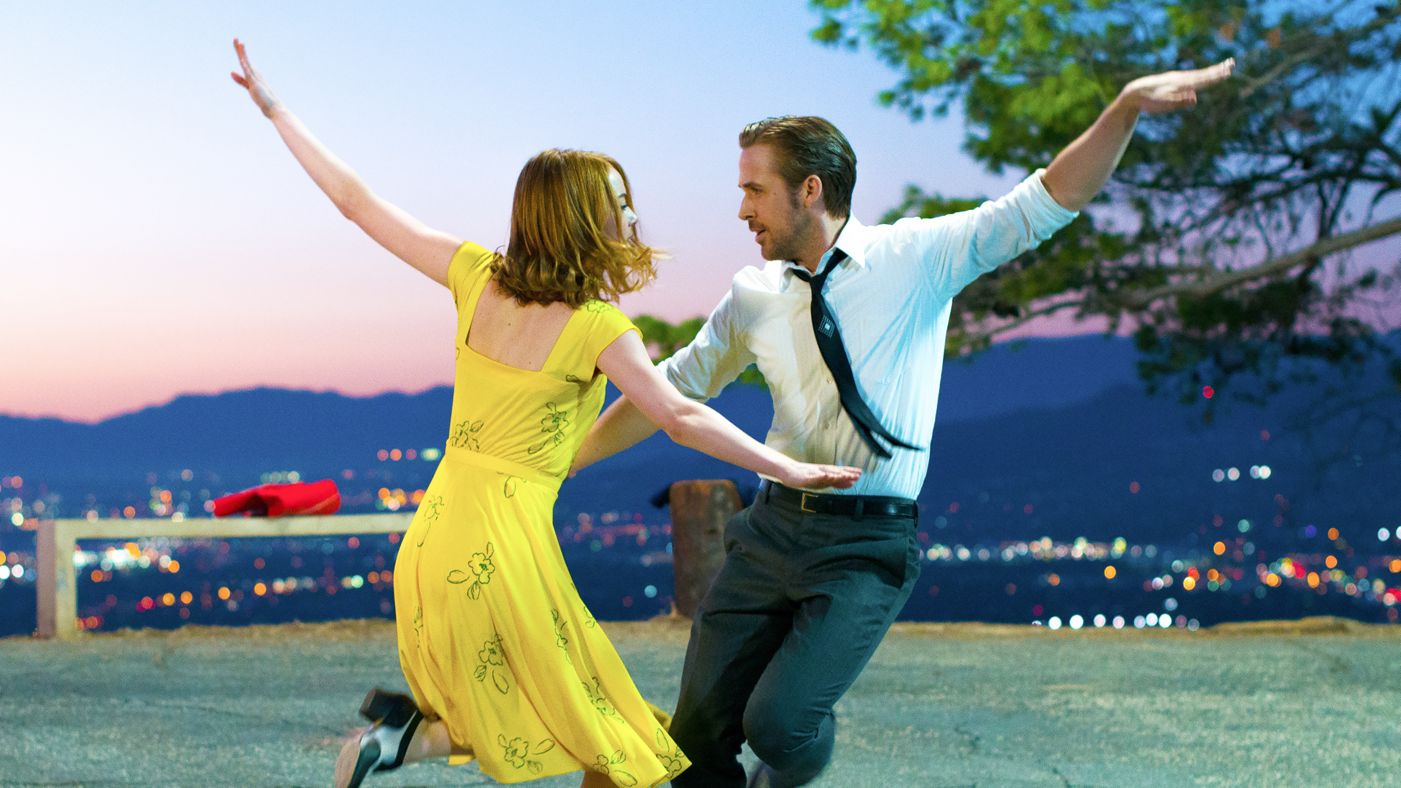Monday, July 12, 2010
I apologize in advance to movie fans who read Cinema Siren in hopes of discovering little gems of movies few have seen or heard of…this time around i’m embracing the obvious, the celebrated, but the best of the best.
I just returned from my first visit to the Norman Rockwell exhibit at the Smithsonian’s American Art Museum. As part of the film program, they showed Frank Capra’s “Mr. Deeds Goes to Town” on the big screen. The showing of a Capra makes perfect sense. Norman Rockwell art was important to keeping morale and optimism up during WW2, with the series “The Four Freedoms” touring in a War Bond Rally that gleaned over $130 million. Frank Capra got hired in WW2 by the US Government to create a series of propaganda movies called “Why We Fight” that inspired and motivated draftees in their duties overseas. Apart from that connection, both artists are obviously the ultimate articulation of American idealism in their respective milieu. They are the cinematic and illustrative equivalents of chocolate chip cookies and warm milk.
When Cinema Siren decided to follow up my big screen classic movie viewing with a feature on Frank Capra, the brain scan for lesser known but lovely little movies was the first order of the day. But when going over his filmography, the realization that three of his better known movies represented the highest reach for three actors in Hollywood, the search could go no further than “Lost Horizon” with Ronald Coleman, “Meet John Doe” with Gary Cooper, and “Mr. Smith Goes To Washington” starring Jimmy Stewart.
There’s no question Frank Capra got his actors to raise to their best work in his movies. The teaming of Clark Gable and Claudette Colbert in 1936’s “It Happened One Night” made movie history. Their interaction, repartee, and “I hate you but I love you” chemistry was a thing of unparalleled beauty. It rose Capra to the top of the A list of Hollywood directors, bringing the movie one of history’s only single movie collection of actor, actress, director, best picture and best writing Oscar wins. Although there are certainly strong films in his resume before this one, (1931’s “Platinum Blonde” and “The Miracle Woman” to name two) “It Happened One Night” travels through time remarkably well, and is a great movie with which to introduce young ones to classic black and whites. Likewise, the ubiquitous holiday offering “It’s a Wonderful Life” holds much of its staying power in the chemistry between Jimmy Stewart and Donna Reed as the lead characters, as well as the interaction between the many character actors making up the rest of the cast. No one easily forgets the romantic scene with George and Mary sharing the phone, or the many moments where the rest of the cast gets to shine, like the scenes with George and Uncle Billy or Potter at the bank…
The Hollywood elite and newcomer alike wanted to work with him for his famed ability to bring out the best in his stars, igniting the spark between lead actors, and building connections in his ensemble casts. There were many character actors who worked with him on repeated occasions. You’ll see James Gleason, Lionel Barrymore and Edward Arnold in multiple Capra movies, and they are some of the best in Hollywood history. He was also responsible for building or igniting the careers of many of the best known actors, like Jean Arthur, Gary Cooper, and Barbara Stanwyck.
Frank Capra originally began his career in films at a props man for silent films. He had edited a movie in high school in 1915, so it wasn’t his first experience with movies…He definitely caught the bug a bit later, after getting a bachelor of Science degree and teaching ballistics and math to artillerymen during world war I.
He worked up the moviemaking food chain working for Mack Sennett, and then moved to Columbia Pictures, where he became top director. He was nominated for 6 Best Director Oscars, and winning 3 for It Happened One Night, Mr. Deeds Goes To Town, and You Can’t Take It With You. When he DIDN’T win, he was up against directors and movies William Wyler for The Best Years of Our Lives, and Victor Fleming for Gone With The WInd.
Those who see Frank Capra’s work as derivative emotionally manipulative cheerfests call his movies Capra-corn. He was a life long Republican and anti-communist, so the propaganda label might have some validity, but the movies still capture an innocence and optimism hoped for as the home front fought the good fight of rationing, support from afar, and holding out hope for happy endings, even if it got them through until the reality of their own sadder ending of wartime loss hit them. He also clung to a vision of America and an idealism of what it could be, way beyond WW2, throughout his long directorial career.
Although moralistic, his movies have always been entertaining and dependably optimistic, but above all there’s no denying they represent some of the best moments in the careers of his actors and actresses.
Lost Horizon:
It is fascinating to me that the movie, historically marked at 2 hours 14 minutes long, started out far longer. The story Capra tells is that after badly received test screening Capra burned 2 reels and released the movie starting with the third reel. The truth is that most of the editing was done to the body of the film. Some of it is lost forever, and Capra himself said he didn’t remember what was cut from it. This is a movie that shows Ronald Coleman at his very best. Ronnie Baby could be a bit of a scenery chewer, coming from the London theatre, and carrying with him a larger than life star power that often lead him to being cast in roles where bigger was better. In “Lost Horizon” we see a Coleman that is restrained but emotive, with a nuanced performance full of subtleties that got the audience fully engaged in the story and his journey. His acting against the visual backdrop of the idyllic scenery and Capra’s use of shadows and light, make this 1937 epic a great example of what a black and white classic movie can be.
A story based on the novel by James Hilton of the same name, Lost Horizon featured a mythical land where war, poverty, and loss where nonexistent and there is no criminals or crime. A film released shortly after the depression had ended and during the buildup before WW2, it had an optimistic forward thinking feel to it, all but guaranteeing its success. It was nominated for 6 Oscars in 1937, winning 2 for Art Direction and Film Editing. Jane Wyatt’s first movie, she has a haunting honesty that validates and predicts a long career in film, playing the innocent and deceptively childlike Sondra.
Mr. Smith Goes To Washington:
This movie fascinates me because it is as timely and compelling today as it was when it was released. I suspect politics were exactly the same in Rome, and in other ancient civilizations. in the halls of power representatives have always lost their perspective when fighting for what they believe in, or have been talked into believing in. What blows all other aspects of the movie away though, is Jimmy Stewart’s acting. It shocks to believe that he didn’t win an Oscar, and while his only win for Philadelphia Story is a worthy win, it has to belong partly to the “Here’s one for the last one” school of awards (along with Julie Andrews for Mary Poppins in 1965). There is an honesty, an emotional truth to his filibuster scenes in Mr. Smith that begs repeated viewing and examination by actors looking to go deeper than their own bags of trickery. Whenever a moment of absolute optimism is desired, these scenes with Stewart are the perfect prescription. There are also wonderful secondary parts played by major players in Hollywood, not least of which are Claude Rains and Ed Arnold.
There is much more to recommend Mr. Smith Goes To Washington, and maybe Cinema Siren is partial, given it is home, but Jimmy Stewart alone is enough to watch this movie, whether for the first time or the 100th.
Meet John Doe:
As shoring up the positive perspectives of countrymen goes, there is no more perfect an example in film than John Doe, nor is there a better example of what Capra and Rockwell had in common. They both believed in, rooted for, and espoused the concept of everyman as unlikely hero. I would defy anyone to find proof either of these artists didn’t absolutely expect the best in their fellow Americans. It is in the character of John Doe that Capra places the embodiment of the power of one. Similar to Mr. Smith, John Doe faces seemingly overwhelming negativity and cynicism head on. They both tamp it down in themselves and forge ahead and they both come very close to giving up.
Like Stewart’s Mr. Smith, Gary Cooper’s acting choices, while more subtle than Stewart, deeply connect you with his character’s plight and therefore solidly hook you into hopes for his happy ending, his redemption… Cooper, a washed up baseball player originally hired to play “John Doe”, someone “hard nosed newspaperwoman” Barbara Stanwyck invented who says he’ll commit suicide in protest, becomes the inspiring hero in spite of himself.
Often characters in Capra movies change significantly for the better, or find redemption, and by the end are likely more accepting of their own worth, going back to a time they had faith, learning to embrace trust in others. Barbara Stanwyck exemplifies those changes as Ann Mitchell. Of Barbara Stanwyck, one of his favorite actresses to work with, Frank Capra said, “In a Hollywood popularity contest show would win first prize hands down.” She was essentially made famous by Capra, who cast her in 1930’s Ladies of Leisure and 1931’s The Miracle Woman. In both those movies she also goes through significant changes, and all three movies feature her in a rise from self serving to noble self sacrifice.
It will be a big home run for all things Americana each time a discouraged film fan searching for a tidbit of gee whiz optimism dips into the deep well of Capra’s filmography. Although it has the sheen of all good things Hollywood WW2 propaganda is known for, 1941’s Meet John Doe inspired a home front unknowingly preparing for war. All three recommended movies warm with a feeling of renewed optimism, and for those who have found the economy, or the gulf, or the middle east, or a bad case of the flu has brought them low, these, along with a trip to the new exhibit of Norman Rockwell in DC, will right them soon enough…



